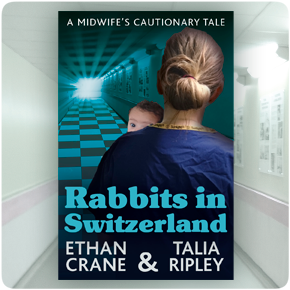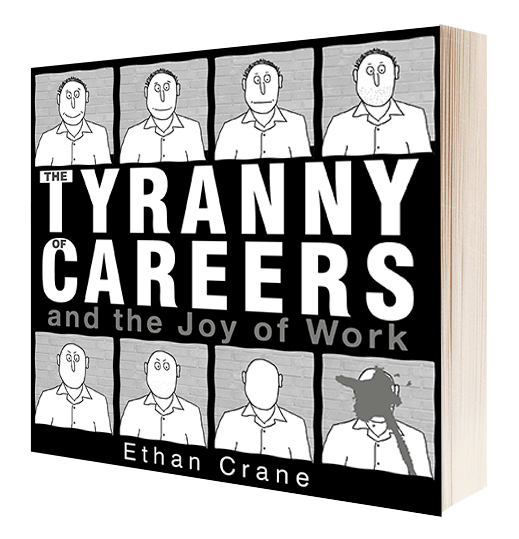Semi-Retirement for the Under Twenties: Part 9
The Pleasure of Creative Ideas
You say: I still do not understand what this is, this pleasure from creative ideas, from using my genuine capabilities. What form does this take? How do I go about finding it?
The first step in discovering the pleasure of creative ideas comes when you see the fruits of the creative ideas of others, and think, ‘I would love to do that myself’. You see musicians perform, you want to be on stage with them. You watch a great football match, you want to play football. You read of the ideas of Darwin or Einstein, and think, ‘I want to investigate theories and experiments that help understand the world’. You read a book that sets down clearly on paper the ideas floating around your own head, and think, ‘I want to publish my own ideas’.
If left to your own devices, what are you most drawn to doing? What fascinates you, and where do your genuine capabilities lie? Do not think that because you did not have these capabilities identified and praised at school that you do not have them. Or that if you did have some capabilities praised at school it has to be these in which you feel creative pleasure. (At school I was praised for being good in maths and logical subjects, but now my creative passions lie in writing and music.) School only tests academic capabilities for the purpose of passing exams in order to get a full-time career job. School education ought to be helping you discover how to be creative, but does not, and has little interest in identifying your creative capabilities.
You love reading but do not consider that a writer is something you can be yourself. You can. Trying is being. All the things you enjoy, books, music, comics, they are there for you to use as a model. Everyone starts out wondering if they will ever be able to create anything of value. You might be obsessed with music: there has never been an easier time in which to make and record your own music. It does not matter that at the moment you have no idea how to go about doing so. The first attempts will be bad, the tenth ones will be better. But the first ones are important. The tenth attempt can’t happen without the first one.
Creative capabilities are commonly thought to only be found in subjects labelled ‘art’, such as writing, musical performance or painting, but there is pleasure in creative ideas everywhere: even in the organisation of people, or in the abstract talent of being good with people. If you can organise people, make things happen, this does not have to be for an employer. What organization would you like to see brought into being, something charitable, something sporting, something political? Volunteer for an organization doing something similar and plan how you will do it better yourself. If you love sport, join a team and play. Start your own team or games, but play, don’t just watch. You can’t feel the same pleasure as a spectator.
The pleasure of creation is not in being the best at your chosen pursuit or receiving acclaim for it, but in having the creative ideas and following them through. Success in creative pursuits is measured only by the finding of pleasure – recognition and financial reward are secondary. How many times have you heard people say this? But you have to experience it to understand. The great thing is there is no such thing as failure, except failure to feel pleasure, at which point you change the direction of your ideas.
Don’t worry if at first you think you are not getting anywhere. It takes time to develop faith in and feel pleasure in your capabilities. You have to relearn the delight you had in creative ideas when you were a child. This creativity is later educated out of most of us and forgotten when older, as we rely more and more on passive forms of entertainment, until we are left with the idea that passive entertainment is all there is. A population of careerists is a population of spectators who are easily bored rather than participants who know how to delight themselves. Watch the creative pleasure of these schoolchildren, particularly at the end where they make up the dancing themselves. They did not learn this for a school exam.
Some creative activities will automatically bring you into contact with others who have similar passions. But if your activities are solitary you need to find like-minded people – watching and sharing in their success and failures helps guide you in your activities. If you are interested in traditional arts, hire a space in an artists’ studio. Make sure it is a social studio, for much of your creative energies come from interacting with other artists.
These activities, the pursuit of pleasure from a creative idea, this is art. Art is not confined to drawing and painting, or whatever is done in a school art lesson. The categorization of school lessons brainwashes us from an early age to think that art is a subject separate from everyday life that requires special talents. Anything that involves following through your creative ideas to produce something that you value, this is art. You are not excluded if you cannot draw or paint or sculpt well. And, even you felt no affinity for the traditional arts at school this does not mean you should not investigate them. Try them for yourself, without deadlines, without a forty minute lesson block. You may find there is something about them that you like and want to pursue. Van Gogh said, ‘If you hear a voice within you say “you cannot paint,” then by all means paint, and that voice will be silenced.’ There is art in science. Darwin’s theory of evolution was a creative idea: the design of a scientific experiment is a creative act, as is the movement into space on a football field that leads to a goal, holding an audience whilst speaking in public or the nailing together of wooden pallettes for a makeshift den.
When you do art for yourself there is no timetable or homework. The work you do for art won’t feel like work, because it is pleasureable, and if it is not pleasureable, if you do not find value in it, it is not art.
This pleasure from creative ideas is not to be taken lightly. It is one that few people have, but many people could have and do not realise. The artist Bill Drummond thinks everyone should have art in their life (see question 88): we should not be watching others make art, we should be making art. We need art for our minds like we need exercise for our bodies. This is the idea behind art therapy in prisons or mental institutions. We all need art therapy, though it need not be called therapy. Everyone is aware of the importance of being healthy, of socialising, but the importance of art, of taking pleasure in creative thoughts, is neglected.
Take semi-retirement from the world of full-time work. Do so before you’ve even started. You are not slacking off, you are not ‘joining the ranks of the unemployed’. You are only unemployed, or underemployed, if you have no creative work with which to fill your spare time. When you are immersed in a project which gives you pleasure, you always have the sense of something to look forward to. You don’t get the Sunday evening blues before Monday work, because even if you have to do subsistence work the next day, it won’t be that long before you can get back to the things that really thrill you.
Forget about finding fulfilment in life from a career. What are you waiting for? Instead plan how your current studies or work will lead to part-time subsistence work. And meanwhile, begin to discover the pleasure of ideas that use your genuine capabilities. This is the life of the happiest people I know.
related post: Finding Other Semi-retirees Will Lessen the Chance of You Giving Up Your Creative Work


